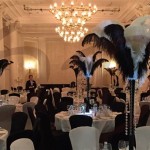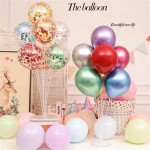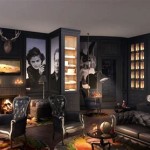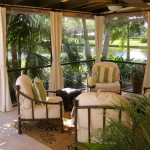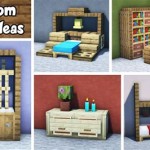Middle Eastern Living Room Decor Ideas: A Guide to Creating an Authentic and Inviting Space
The allure of Middle Eastern design lies in its rich history, intricate patterns, and inviting atmosphere. Translating this aesthetic into a living room requires a careful consideration of key elements that contribute to its characteristic charm. This article explores various ideas for incorporating Middle Eastern decor into a living room, focusing on creating a harmonious and authentic space.
Key Element 1: Color Palette and Textiles
The foundation of any successful design scheme is the color palette. Middle Eastern interiors often feature warm, earthy tones reminiscent of the desert landscape. Think of colors like terracotta, sand, ochre, and deep reds. These hues create a sense of warmth and tranquility, essential for a welcoming living room. Accent colors, such as sapphire blue, emerald green, and gold, can be introduced to add visual interest and a touch of opulence.
Textiles play a crucial role in conveying the Middle Eastern aesthetic. Rich fabrics like silk, velvet, and brocade are often used in upholstery, curtains, and cushions. Look for fabrics with intricate patterns, such as geometric designs, floral motifs, or calligraphy-inspired prints. These patterns add visual depth and reflect the region's artistic heritage. Layering different textures, such as incorporating a kilim rug with silk cushions, enhances the tactile experience and creates a more inviting atmosphere.
Consider incorporating handwoven carpets and rugs. These are not only functional but also serve as works of art. Traditional Persian, Turkish, or Moroccan rugs offer intricate patterns and vibrant colors that can anchor the entire room. For a more modern take, opt for rugs with simpler geometric designs in neutral tones. The size of the rug is important. It should be large enough to define the seating area and ground the furniture within the space.
Cushions are another essential element for adding comfort and visual appeal. Scatter cushions in various sizes and shapes across sofas and armchairs. Experiment with different fabrics, patterns, and textures to create a layered and inviting look. Consider using bolster cushions for added support and a touch of traditional flair. Embellishments like tassels, embroidery, and beadwork further enhance the richness and detail of the textiles.
Key Element 2: Furniture and Layout
The furniture selection should prioritize comfort and functionality while adhering to the overall aesthetic. Low seating arrangements are common in Middle Eastern design, encouraging relaxation and conversation. Opt for sofas and armchairs with deep seats and plush cushions. Consider adding floor cushions or poufs for informal seating options. These are particularly useful when entertaining guests or creating a more relaxed atmosphere.
Wood is a prevalent material in Middle Eastern furniture. Look for pieces made from dark woods like walnut or mahogany. Intricate carvings and inlays are common features, adding a touch of artistry and craftsmanship. Consider incorporating a coffee table with a geometric design or a side table with mother-of-pearl inlay. These details contribute to the authenticity of the design scheme.
The layout of the living room should promote social interaction. Arrange furniture in a way that encourages conversation and creates a sense of intimacy. A circular or semi-circular arrangement is often preferred, allowing guests to easily interact with each other. Avoid placing furniture against walls, as this can create a formal and less inviting atmosphere. Instead, float the furniture to define different zones within the room.
Lighting is crucial for setting the mood. Opt for warm, ambient lighting that creates a cozy and inviting atmosphere. Use a combination of overhead lighting, table lamps, and floor lamps to achieve the desired effect. Consider incorporating lanterns or chandeliers with intricate metalwork to add a touch of Middle Eastern flair. Dimmers allow for adjusting the lighting levels to suit different occasions and create a more relaxing ambiance.
Incorporate a focal point in the room. This could be a fireplace, a large window with a view, or a statement piece of furniture. Arrange the furniture around the focal point to draw attention to it and create a sense of balance. Avoid cluttering the room with too many accessories. Instead, focus on a few carefully chosen pieces that complement the overall design scheme.
Key Element 3: Decorative Accents and Cultural References
Decorative accents are essential for adding personality and character to the living room. Incorporate elements that reflect the culture and heritage of the Middle East. Consider displaying traditional pottery, metalwork, or calligraphy pieces. These items add visual interest and provide a connection to the region's artistic traditions.
Arabic calligraphy is a beautiful and versatile decorative element. Frame calligraphy prints or incorporate them into wall art. Consider using calligraphy-inspired patterns on cushions, rugs, or wallpaper. This adds a touch of elegance and sophistication to the room. Choose phrases or passages that resonate with you and reflect the values and beliefs of the culture.
Metal lanterns and decorative trays are common features in Middle Eastern interiors. Use lanterns to create a warm and inviting glow. Place them on side tables, coffee tables, or hang them from the ceiling. Decorative trays can be used to serve tea or coffee, or simply as a display for decorative items. Look for trays with intricate metalwork or inlaid designs.
Plants can add life and freshness to the living room. Choose plants that thrive in warm, dry climates, such as succulents, cacti, or olive trees. Place them in decorative pots or planters that complement the overall design scheme. Plants not only add visual appeal but also help to purify the air and create a more relaxing atmosphere.
Pay attention to the details. Small touches, such as scented candles, incense burners, or decorative bowls, can make a big difference in creating a welcoming and inviting atmosphere. Choose scents that are reminiscent of the Middle East, such as frankincense, myrrh, or oud. These scents can evoke a sense of warmth, spirituality, and exoticism. Consider adding a hookah or shisha pipe for a touch of authenticity, but ensure it is used responsibly and in accordance with local regulations.
Mirrors can be used to create the illusion of space and reflect light. Hang a large mirror on a wall or place several smaller mirrors strategically around the room. Look for mirrors with ornate frames or intricate designs. Mirrors not only add visual appeal but also help to brighten up the room and make it feel more spacious.
Incorporate artwork that reflects the culture and heritage of the Middle East. This could include paintings, photographs, or sculptures. Choose pieces that resonate with you and complement the overall design scheme. Consider displaying artwork that depicts landscapes, portraits, or scenes from daily life in the Middle East. This adds a personal touch and provides a connection to the region's rich cultural traditions.
Ultimately, creating a Middle Eastern-inspired living room is about more than just replicating a specific style. It's about creating a space that reflects the warmth, hospitality, and rich cultural heritage of the region. By carefully considering the color palette, textiles, furniture, and decorative accents, one can create a living room that is both authentic and inviting.

Middle Eastern Interior Design Trends And Home Decorating Ideas Living Room Nook Miller Homes Sunken

Middle Eastern Diy Home Décor Ideas

Middle Eastern Diy Home Décor Ideas Элегантный декор дома Интерьер в азиатском стиле Декор спальни

Arabic Decor Get A Luxurious Living Room With These Amazing Ideas

5 Luxury Arabian Style Home Decor Ideas

Middle Eastern Interior Design Trends And Home Decorating Ideas Asian Decor

Middle Eastern Diy Home Décor Ideas

Middle Eastern Diy Home Décor Ideas

370 Best Middle Eastern Decorating Style Ideas Design Moroccan Interiors

Top 5 Arabic Living Room Inspirations For Your Home Love Happens Mag
Related Posts
